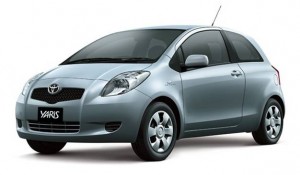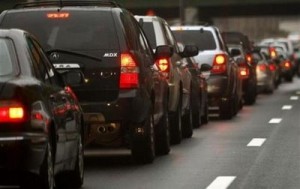As I drive every day in this 100% electric vehicle I ponder questions bigger then me and my grasp of the world. It don’t take much to overload my circuits.
What about the future of the automobile in the western world?
How much are Americans ready to give up, to save energy?
How will we cope with the coming supply/demand problems with oil?
Will we be freer without our 99% dependence on oil and gas?
Is there a way to make the electric grid work to cover a lot of the energy transfer?
Will the Electric Companies raise their rates even more?
Where does the electric power generation come from ?
Like cocaine, with oil prices lower, consumption goes up. Demand for high mileage vehicles has dropped and SUVs are back in vogue. Hybrid vehicles fill lots as demand drops
and Hope for Small Cars Fades
WSJ By M. DOLAN
“……….Practically every small car in the market is stacked up at dealerships. At the end of February, Honda Motor Co. had 22,191 Fits on dealer lots — enough to last 125 days at the current sales rate, according to Autodata Corp. In July, it had a nine-day supply, while the industry generally considers a 55- to 60-day supply healthy.
For other models the supply situation is even worse. Toyota Motor Corp. has enough Yaris subcompacts to last 175 days. Chrysler LLC has a 205-day supply of the Dodge Caliber. And Chevrolet dealers have 427 days’ worth of Aveo subcompacts. At the current sales rate, General Motors Corp. could stop making the Aveo and it wouldn’t run out until May 24, 2010.
“I don’t think Americans really like small cars,” said Beau Boeckmann, whose family’s Galpin Ford in southern California is the country’s largest Ford dealer. “They drive them when they think they have to, when gas prices are high. But we’re big people and we like big cars.”………..”
I drive up to a red light and sit there looking at all the SUVs and V-8s. They are ready for V6 engine powered vehicles, not even ready for 4 cylinder ICEs and far from being there with high mileage, manual shift 3 and 4 cylinder ICEs. Electric vehicles work great, but
America is not there yet.
Once you see the average car driven in the USA a high mileage 4 cylinder ICE then and only then will the electric powered vehicle or fuel cell electric take a large jump forward.
See http://www.diyelectriccar.com/forums/showthread.php/arguments-electrics-…
Americans have spent $350 Billion on oil imports in one year. With all that money going out of the country mostly to the Arab countries that sponsor the terrorists fighting our national defense which is sending $700 billion a year.
Folks, we are sponsoring both sides of the war on terror! (or new name: overseas contingency operations) Economists say if that $350,000,000,000 stayed in country, instead of leaving it would generate $7 trillion of economic activity. It should become a military and economic priority stop the unbalanced flow of dollars out.
Energy analyst Amory Lovins ( http://en.wikipedia.org/wiki/Amory_Lovins ) believes that Efficiency is the way out of this mess. Now I myself am not being a green house gas theorist but a believer in capitalism not government (socialist) cures. Still I like some of his ideas.
*Reward electric and gas utilities for cutting our bills, not selling us more energy.
*Feebates – ” For getting efficient cars from the drawing board to the showroom and onto the road quickly, the most powerful and attractive tool we know is called a fee-bate. It’s a cross between a fee and a rebate. It works like this: when you go to the dealer to buy a vehicle of the size that you want, there will be more and less efficient models on offer. Buyers of the less efficient models will pay a corresponding fee, while buyers of the more efficient ones will get a corresponding rebate. The rebates are paid for by others’ fees, so it’s revenue-neutral, and because you do it separately in each automobile size class, it’s size-neutral. Therefore, you’re “incentivized” to buy a more efficient car of the size you want, but not to buy a different size than you want.”
James Woolsey former CIA director
* “Congress needs to condition some part of the $25 billion for rescuing auto companies on their moving rapidly to produce vehicles that use electric power. It should also require that some significant share of cars purchased by the government use electricity. With a plug-in hybrid you will be able drive all-electric at a cost of only two to four cents a mile for the first 20-40 miles each day. For an average amount of daily driving your electricity cost will beat the pants off gasoline costing 10 cents to 20 cents a mile. OPEC can’t drop oil’s price enough to compete with electricity.
* We should borrow the successful German model of the “feed-in tariff” — which requires utilities to pay customers who generate renewable energy a fixed, above-market rate for power. The dropping costs of both solar panels and electricity storage will soon let you charge your plug-in at night from new “flow” batteries in your basement, and then drive the next day powered by the sunlight that fell on your roof the day before. Let OPEC see if it can figure out how to monopolize that.
* Charging cars’ batteries at night means that driving on electricity won’t require new power plants. But Congress needs to improve the grid’s security and resilience against thunderstorms, hackers and terrorists by giving the Federal Energy Regulatory Commission needed emergency authority.
* We need to grow and maintain substantial battery development and manufacturing technology in the U.S. Congress should establish a battery version of Sematech, the public-private partnership that was set up in the 1980s to ensure that the U.S. stayed in the business of developing and manufacturing semiconductors in the face of international competitors that were often heavily state-aided. We shouldn’t replace foreign oil dependence with foreign battery dependence.”
Contradicting opinion……….
5 Myths About Breaking Our Foreign Oil Habit
By Robert Bryce
Institute for Energy Research
http://www.washingtonpost.com/wp-dyn/content/article/2008/01/10/AR200801…
He believes we have nothing to worry about. All myths. BTW IER’s top sponsor is EXXON.
My local electric cooperative here in West Tennessee is a very reliable organized company. They do not give any discount for night usage, in fact they do give a discount for high volume usage. In a letter the company sent to all customers announcing another 20% increase in electrical rates in October 2008 it read…..
Since December (2007) coal prices have more than doubled and continue to rise. This is significant because about 54% of TVA’s power supply comes from coal. Natural gas prices have risen too, by omore than 65% since Dec. 2007. Additionally, because of the ongoing drought, TVA has less low-cost hydro power than usual and must replace that lost power from other sources, which get more expensive every month. Over the past six months, TVA purchased 12% more power from the market than it did during the same period last year.
In April of 2009 they dropped rates 12%.

